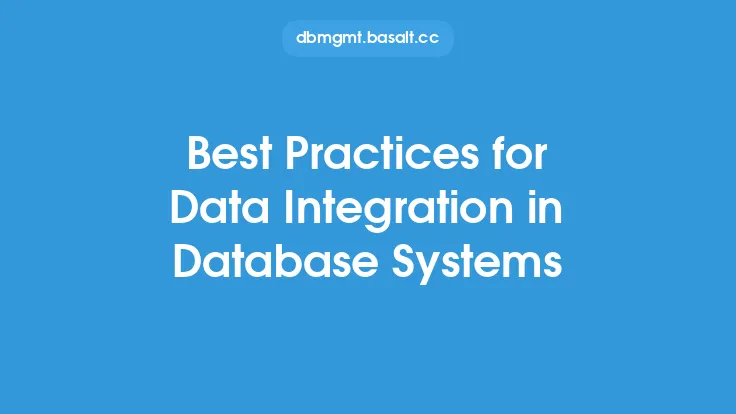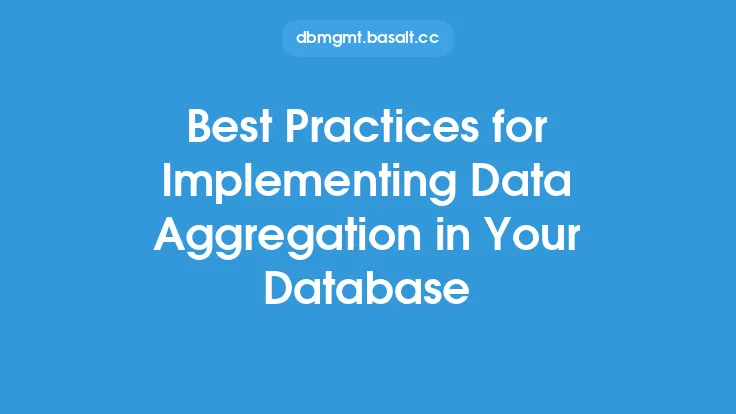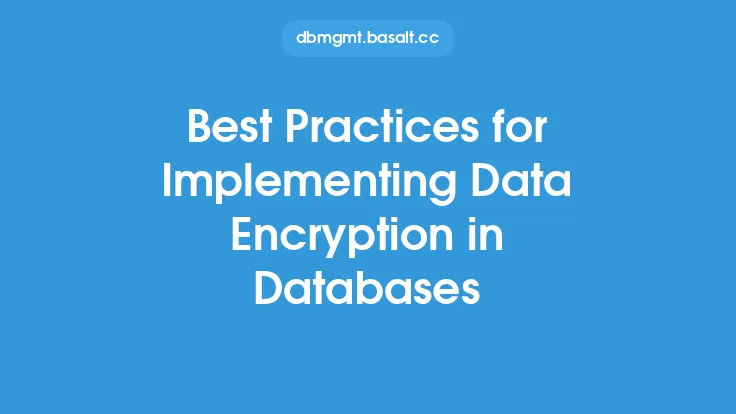Implementing data duplication in database systems requires careful consideration and planning to ensure that the benefits of improved performance and reduced complexity are realized while minimizing the potential drawbacks. Data duplication, a form of data denormalization, involves storing redundant data in multiple locations to improve query performance, reduce join operations, and enhance data availability. However, it can also lead to data inconsistencies, increased storage requirements, and higher maintenance costs if not implemented correctly.
Introduction to Data Duplication Techniques
There are several data duplication techniques that can be employed in database systems, including data replication, data caching, and materialized views. Data replication involves duplicating data in multiple locations, such as in a distributed database or a data warehouse, to improve data availability and reduce latency. Data caching involves storing frequently accessed data in a faster, more accessible location, such as in memory or on a solid-state drive, to reduce query execution times. Materialized views, on the other hand, involve pre-computing and storing the results of complex queries to reduce the computational overhead of query execution.
Designing a Data Duplication Strategy
To implement data duplication effectively, a well-designed strategy is essential. This involves identifying the data that needs to be duplicated, determining the frequency of updates, and selecting the most appropriate duplication technique. The strategy should also take into account the trade-offs between data consistency, storage requirements, and query performance. For example, duplicating data that is infrequently updated may be acceptable, but duplicating data that is frequently updated may lead to data inconsistencies and require additional mechanisms to ensure data integrity.
Implementing Data Duplication in Database Systems
Implementing data duplication in database systems requires careful consideration of the database design, data models, and query patterns. The database design should be modified to accommodate the duplicated data, and the data models should be updated to reflect the changes. The query patterns should also be analyzed to ensure that the duplicated data is being used effectively to improve query performance. Additionally, the database system should be configured to handle the increased storage requirements and potential data inconsistencies that may arise from data duplication.
Managing Data Consistency and Integrity
One of the major challenges of implementing data duplication is ensuring data consistency and integrity. Data inconsistencies can arise when the duplicated data becomes outdated or incorrect, which can lead to incorrect query results or data corruption. To mitigate this risk, mechanisms such as data validation, data synchronization, and data reconciliation should be implemented to ensure that the duplicated data remains consistent and accurate. These mechanisms can include techniques such as checksums, digital signatures, and data hashing to detect data corruption or inconsistencies.
Monitoring and Maintaining Data Duplication
Monitoring and maintaining data duplication is crucial to ensure that the benefits of data duplication are realized and the potential drawbacks are minimized. This involves regularly monitoring the database system to detect data inconsistencies, storage bottlenecks, and query performance issues. The data duplication strategy should also be regularly reviewed and updated to reflect changes in the database design, data models, and query patterns. Additionally, the database system should be configured to handle failures, errors, and exceptions that may arise from data duplication, such as data corruption or inconsistencies.
Best Practices for Data Duplication
To ensure that data duplication is implemented effectively, several best practices should be followed. These include:
- Identifying the data that needs to be duplicated and determining the frequency of updates
- Selecting the most appropriate duplication technique based on the database design, data models, and query patterns
- Implementing mechanisms to ensure data consistency and integrity, such as data validation, data synchronization, and data reconciliation
- Regularly monitoring the database system to detect data inconsistencies, storage bottlenecks, and query performance issues
- Configuring the database system to handle failures, errors, and exceptions that may arise from data duplication
- Regularly reviewing and updating the data duplication strategy to reflect changes in the database design, data models, and query patterns.
Conclusion
Implementing data duplication in database systems requires careful consideration and planning to ensure that the benefits of improved performance and reduced complexity are realized while minimizing the potential drawbacks. By following best practices, such as identifying the data that needs to be duplicated, selecting the most appropriate duplication technique, and implementing mechanisms to ensure data consistency and integrity, database administrators can ensure that data duplication is implemented effectively. Regular monitoring and maintenance are also crucial to ensure that the benefits of data duplication are realized and the potential drawbacks are minimized.





